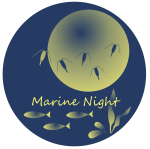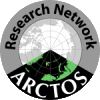After absorbing the theory at UNIS, Longyearbyen and arriving safely at Ny-Ålesund on the 15th of January the chance finally arrived to use the knowledge and jump into action mode. Many things needed to be done: from the moving of equipment through to diving into the technical manuals to set the instrumentation before sampling.
Working in the unforgivable winter of Svalbard requires careful attention. From the small but not to be forgotten details such as clothing, head lamps and reflectors, rifles (when leaving the settlement, so to avoid to become a delicious polar bear meal) up to the problem solving of using the instrumentation in such harsh weather conditions. Everything takes longer in these conditions and replanning becomes no exemption.
These experiences are especially noticed by the two of us, both foreigners, one born and raised in Brazil and the other in South Africa. Even the simplest task becomes an issue such as using gloves and increasing the clumsiness or barely managing the tying of ones shoes: a lot of lessons to learn here.
The state of the art technology
As a student of aerospace engineering the preparation and usage of the robots is straight forward, with manuals full of pictures, like an adult Lego, yet the problem solving fried many a brain cell.
The polar night was never studied deeply, is a hard environment and never before (in our knowledge) one was able to work in such conditions as we do now. With autonomous underwater vehicles, remotely operated vehicles and different sensors with a level of sensitivity to measure light even in the darkest conditions. Polar night was previously thought as a dead or hibernated environment and we are on a mission to redefine this statement.
In remembrance of L. de Broglie
Sometimes science might be complicated even when answering mundane questions such as: which species live here? Where? How do they feed themselves?
It is important to keep track and consistency of the data. For every measurement, we need to guarantee that we have instrument characteristics controlled, so we can discriminate real values from noise. Science needs precision in order to produce meaningful data. Sometimes this includes boring or monotonic work, but its quality is highly dependent on careful set up and testing.
Ny-Ålesund was not a random choice. The purpose was not to make the northernmost research in the world (LoL). Aiming for an undisturbed condition, the lack of human inhabitants here, allows us to have a gigantic lab, where we are able to control almost everything, from the quantity of light emission through to the activities around the harbor: ensuring that one does not measure human presence.
We daily face the cold with smiles and bearing in our minds that “the actual state of our knowledge is always provisional and … there must be, beyond what is actually known, immense new regions to discover” (Louis de Broglie, 1892 – 1987)
Written by: Fabienne Fichtner and Michel Klüger
Video by Fabienne Fichtner



